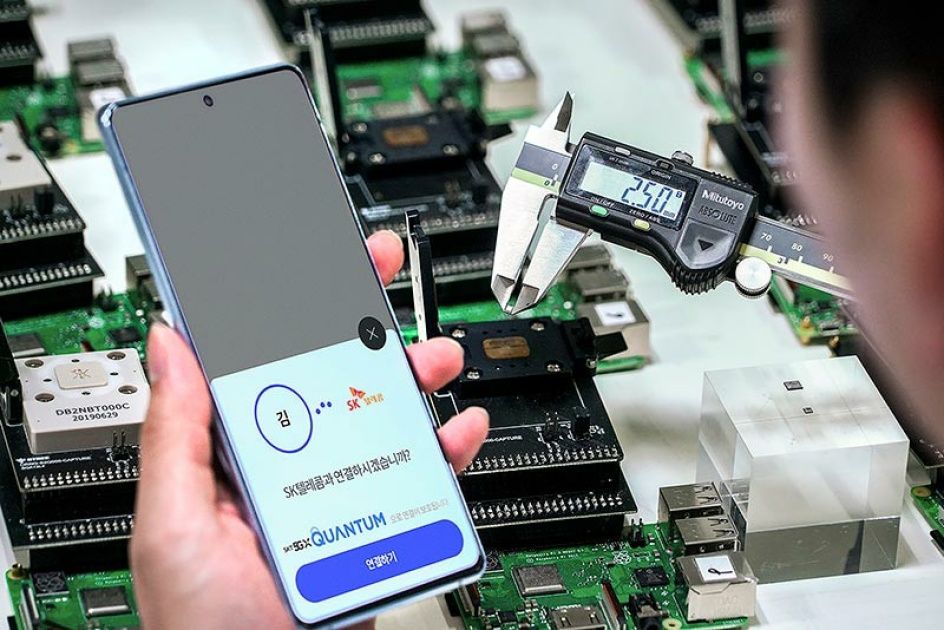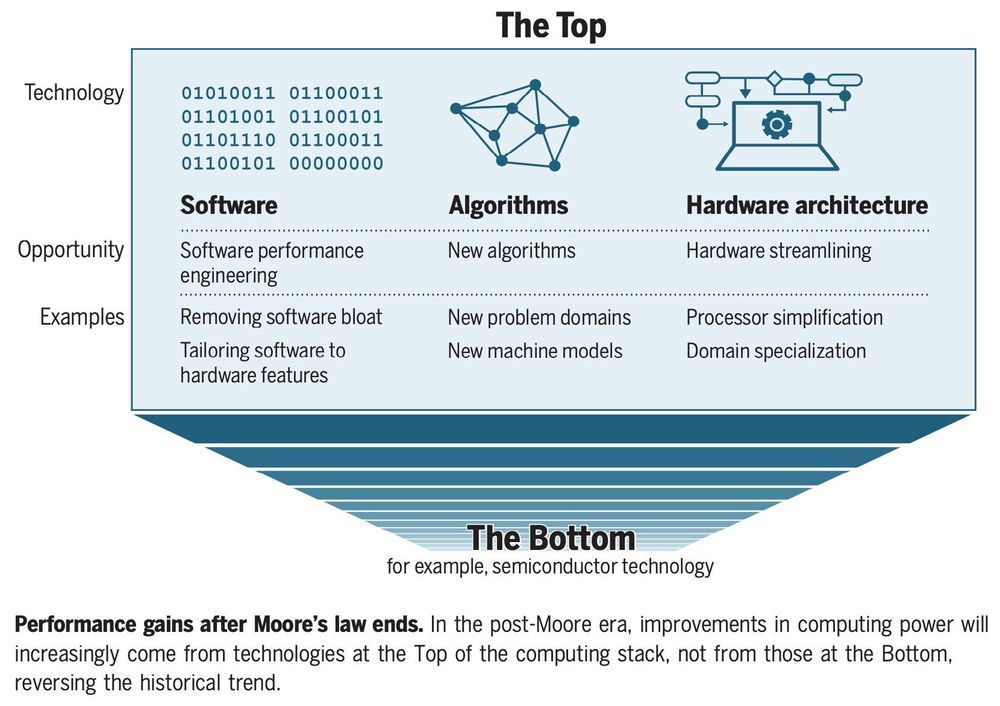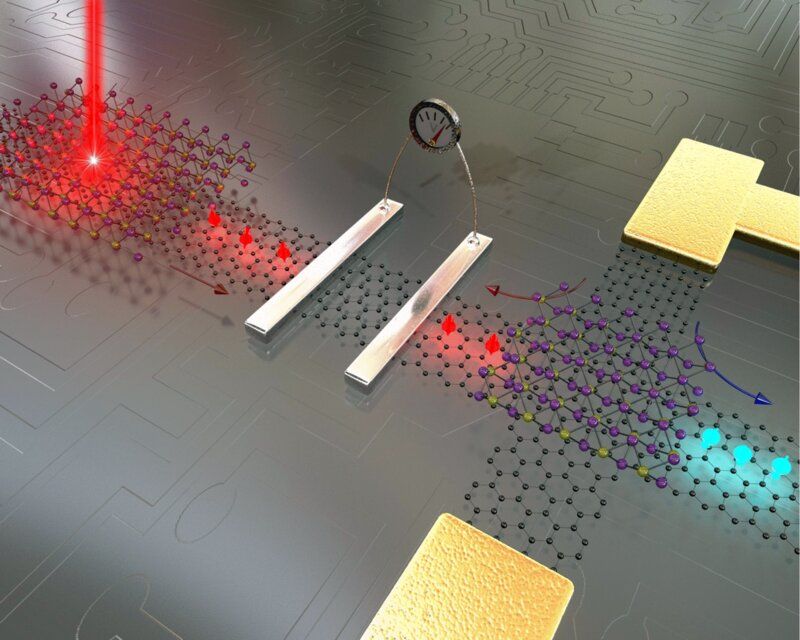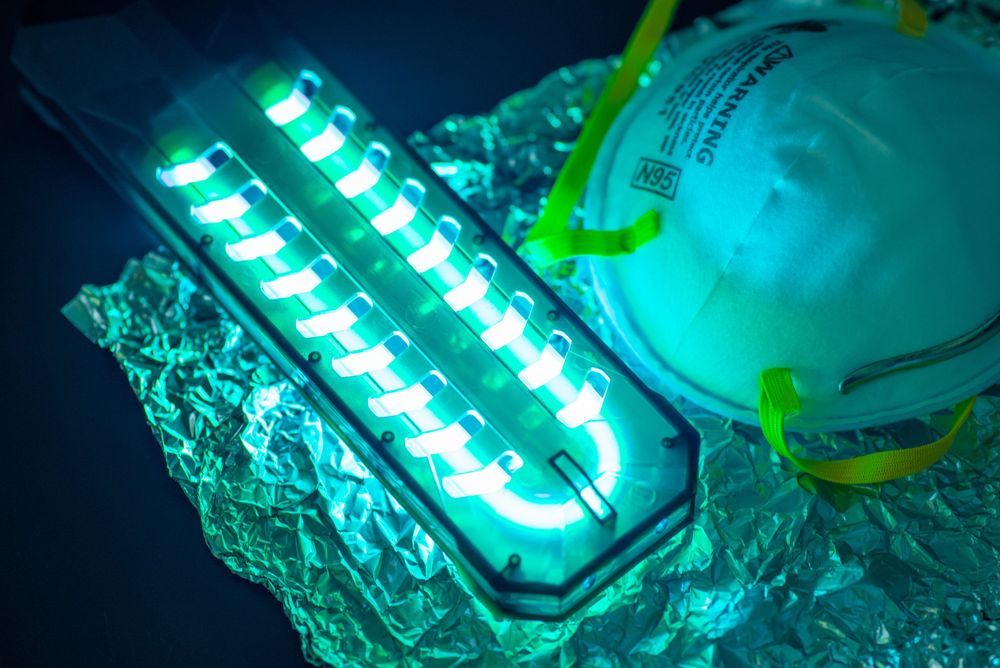Archive for the ‘mobile phones’ category: Page 135
Jun 7, 2020
Room-temperature superconductors could revolutionize the world’s energy
Posted by Quinn Sena in categories: computing, mobile phones

https://youtube.com/watch?v=Yi6q1j_QjSc
· 4 hrs ·
Now that they exist it certainly will change the world.
Continue reading “Room-temperature superconductors could revolutionize the world’s energy” »
Jun 6, 2020
If transistors can’t get smaller, then software developers have to get smarter
Posted by Saúl Morales Rodriguéz in categories: computing, internet, mobile phones
In 1965, Intel co-founder Gordon Moore predicted that the number of transistors that could fit on a computer chip would grow exponentially —- and they did, doubling about every two years. For half a century Moore’s Law has endured: computers have gotten smaller, faster, cheaper and more efficient, enabling the rapid worldwide adoption of PCs, smartphones, high-speed Internet and more.
This miniaturization trend has led to silicon chips today that have almost unimaginably small circuitry. Transistors, the tiny switches that implement computer microprocessors, are so small that 1000 of them laid end-to-end are no wider than a human hair. For a long time, the smaller the transistors were, the faster they could switch.
But today, we’re approaching the limit of how small transistors can get. As a result, over the last decade researchers have been scratching their heads to find other ways to improve performance so that the computer industry can continue to innovate.
Jun 5, 2020
Taiwan Draws Up Plan to Woo $1.3 Billion of Annual Tech Research
Posted by Derick Lee in categories: computing, government, internet, mobile phones
The endeavor escalates global competition for much-sought-after semiconductor technology and is intended to build on the island’s technology industry, led by major players such as key Apple Inc. suppliers Taiwan Semiconductor Manufacturing Co. and Hon Hai Precision Industry Co. Taiwan has been caught in the middle of a clash between the U.S. and China over the development of chip technology that powers everything from smartphones to 5G base stations.
Taiwan is dangling incentives to attract more than NT$40 billion ($1.3 billion) of annual investments in research and technology, creating a seven-year blueprint to safeguard the island’s lead in semiconductors and other cutting-edge fields.
As part of the initiative, the cabinet plans to allocate more than NT$10 billion to entice foreign chipmakers to set up R&D facilities locally, confirming an earlier Bloomberg News report. The government said Thursday it aims to subsidize as much as half of all research and development costs incurred by global chip companies that build centers on the island.
Continue reading “Taiwan Draws Up Plan to Woo $1.3 Billion of Annual Tech Research” »
Jun 4, 2020
Butterfly-inspired nanotech makes natural-looking pictures on digital screens
Posted by Quinn Sena in categories: computing, mobile phones, nanotechnology
Taking inspiration from nature’s nanotech that creates the stunning color of butterfly wings, a University of Central Florida researcher is creating technology to make extremely low-power, ultra-high-definition displays and screens that are easier on the eyes.
The new technology creates digital displays that are lit by surrounding light and are more natural looking than current display technologies that rely on energy-intensive bright lights hidden behind screens. The findings were published Wednesday in the journal Proceedings of the National Academy of Sciences.
“This display is more of a natural look than your current computer or smartphone screens,” said Debashis Chanda, an associate professor in UCF’s NanoScience Technology Center and principal investigator of the research. “It is like seeing a portrait on the wall at your house. It doesn’t have that glare or extra light. It is more like looking at the natural world.”
Jun 4, 2020
Scientists Create an AI From a Sheet of Glass
Posted by Shane Hinshaw in categories: mobile phones, robotics/AI

It turns out that you don’t need a computer to create an artificial intelligence. In fact, you don’t even need electricity.
In an extraordinary bit of left-field research, scientists from the University of Wisconsin–Madison have found a way to create artificially intelligent glass that can recognize images without any need for sensors, circuits, or even a power source — and it could one day save your phone’s battery life.
Continue reading “Scientists Create an AI From a Sheet of Glass” »
Jun 4, 2020
Graphene and 2-D materials could move electronics beyond ‘Moore’s law’
Posted by Genevieve Klien in categories: computing, mobile phones, nanotechnology, particle physics
A team of researchers based in Manchester, the Netherlands, Singapore, Spain, Switzerland and the U.S. has published a new review on a field of computer device development known as spintronics, which could see graphene used as building block for next-generation electronics.
Recent theoretical and experimental advances and phenomena in studies of electronic spin transport in graphene and related two-dimensional (2-D) materials have emerged as a fascinating area of research and development.
Spintronics is the combination of electronics and magnetism, at the nanoscale and could lead to next generation high-speed electronics. Spintronic devices are a viable alternative for nanoelectronics beyond Moore’s law, offering higher energy efficiency and lower dissipation as compared to conventional electronics, which relies on charge currents. In principle we could have phones and tablets operating with spin-based transistors and memories.
Jun 3, 2020
Handheld UV Light Devices That Kill COVID-19, Other Viruses May Soon Be As Common As Phone, Keys
Posted by Quinn Sena in categories: biotech/medical, chemistry, mobile phones
UNIVERSITY PARK, Pa. — Phone, keys, wallet…ultraviolet light device. Just in case you wanted yet another item to carry around all day, researchers say that portable, handheld COVID-19 killing ultraviolet light devices may be a reality in the future. These gadgets would emit high-intensity ultraviolet light and quickly disinfect targeted areas.
There are two main ways to clean and remove bacteria and viruses from a given surface: chemicals and ultraviolet (UV) radiation exposure. UV radiation between 200 and 300 nanometers can effectively kill a virus and stop it from replicating itself. Obviously, devices emitting UV rays would come in handy these days due to COVID-19, but as of now such devices require an expensive, bulky mercury-containing gas discharge lamp with a short battery life.
The study’s authors, however, believe that much more portable, longer lasting, energy efficient, and environmentally friendly UV light emitting diodes can be developed. The necessary LEDs already exist, but the process has been complicated by the fact that electrode materials must also be transparent.
Jun 2, 2020
Automatic and scalable fault detection for mobile applications
Posted by Quinn Sena in categories: electronics, mobile phones, robotics/AI
This paper describes the design, implementation, and evaluation of VanarSena, an automated fault finder for mobile applications (“apps’‘). The techniques in VanarSena are driven by a study of 25 million real-world crash reports of Windows Phone apps reported in 2012. Our analysis indicates that a modest number of root causes are responsible for many observed failures, but that they occur in a wide range of places in an app, requiring a wide coverage of possible execution paths. VanarSena adopts a “greybox’’ testing method, instrumenting the app binary to achieve both coverage and speed. VanarSena runs on cloud servers: the developer uploads the app binary; VanarSena then runs several app “monkeys’’ in parallel to emulate user, network, and sensor data behavior, returning a detailed report of crashes and failures. We have tested VanarSena with 3000 apps from the Windows Phone store, finding that 1108 of them had failures; VanarSena uncovered 2969 distinct bugs in existing apps, including 1227 that were not previously reported. Because we anticipate VanarSena being used in regular regression tests, testing speed is important. VanarSena uses two techniques to improve speed. First, it uses a “hit testing’’ method to quickly emulate an app by identifying which user interface controls map to the same execution handlers in the code. Second, it generates a ProcessingCompleted event to accurately determine when to start the next interaction. These features are key benefits of VanarSena’s greybox philosophy.
2014-06
Jun 2, 2020
Wallpaper image crashing Android phones
Posted by Saúl Morales Rodriguéz in category: mobile phones
A picture may be worth a thousand words, but apparently one image is worth potentially thousands of headaches for Android users recently.
The noted tech information leaker Ice Universe this weekend posted a warning about an image that if set as wallpaper will soft-brick Samsung and Google Pixel phones. Soft-bricking triggers Android devices to continuously loop an action or freeze the unit. This generally requires a factory reset.
The image, a seemingly innocuous sunset (or dawn) sky above placid waters, may be viewed without harm. But if loaded as wallpaper, the phone will crash.














